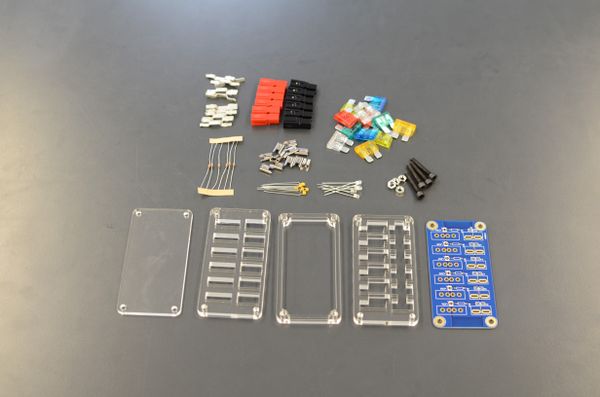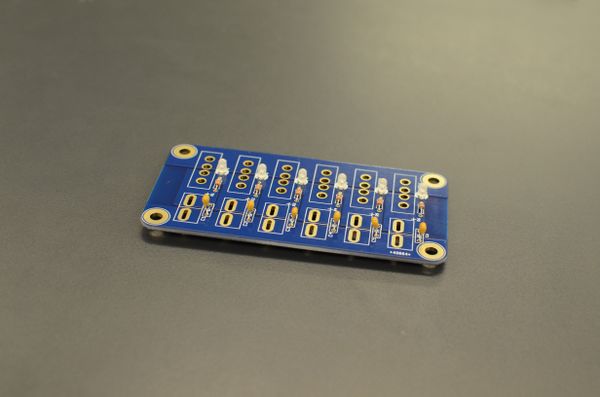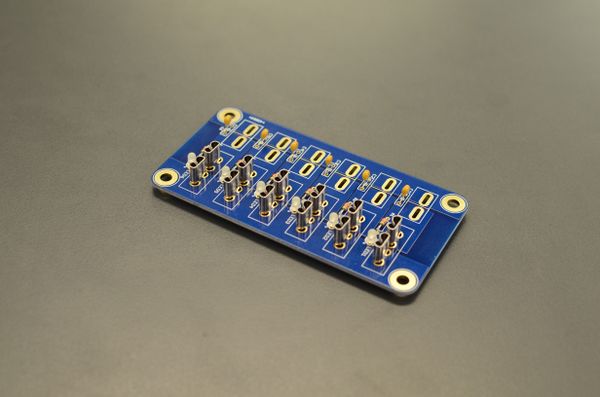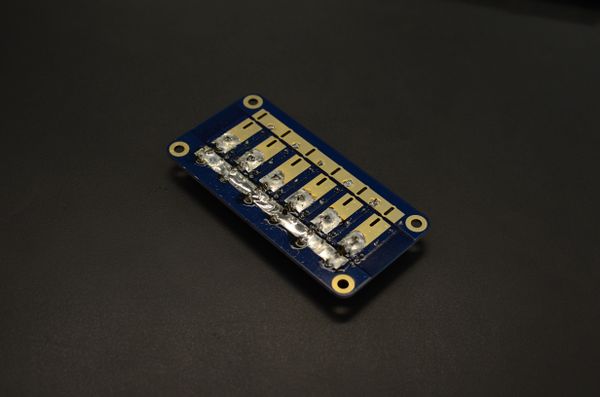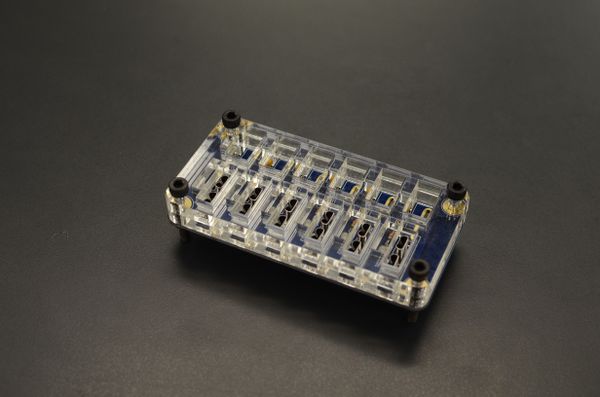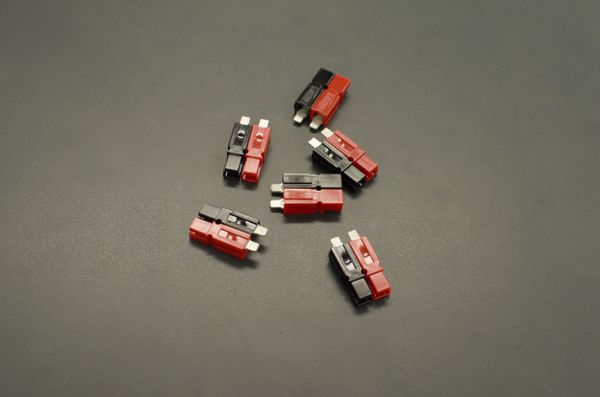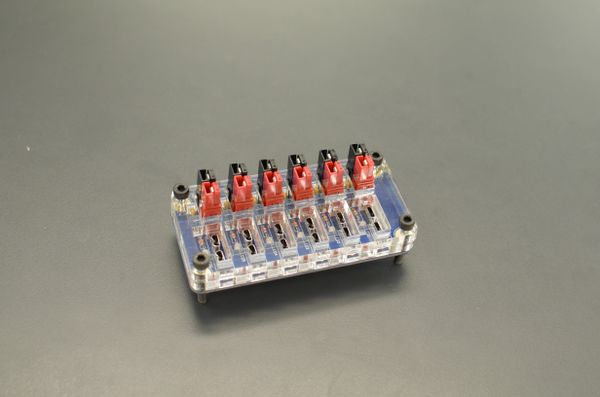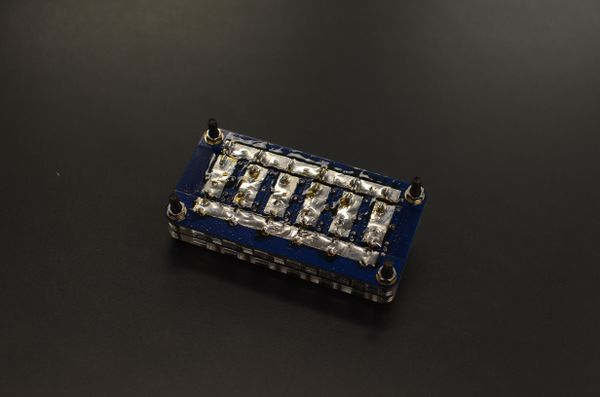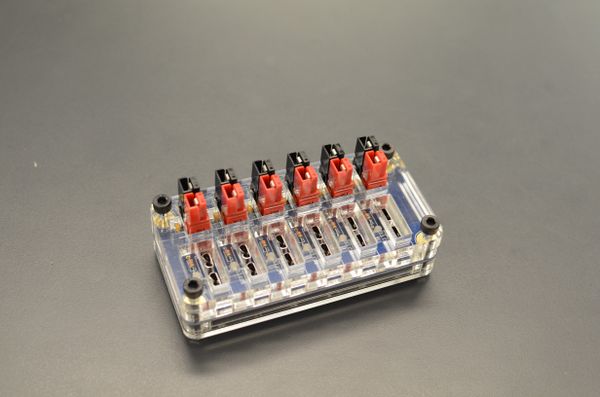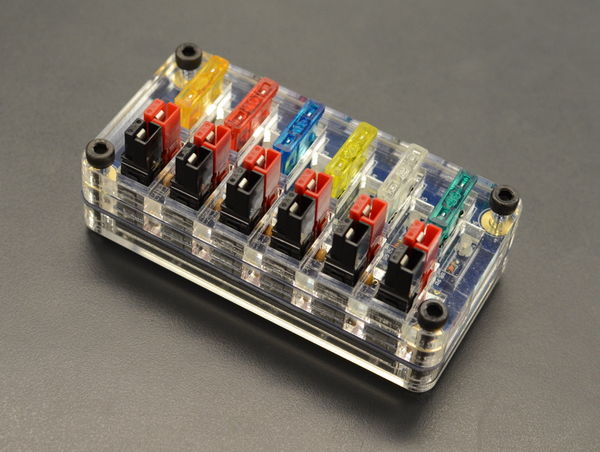Powerpole Distribution: Difference between revisions
DavidNewman (talk | contribs) |
DavidNewman (talk | contribs) |
||
| Line 59: | Line 59: | ||
* 6 x 3mm red/yellow LEDs | * 6 x 3mm red/yellow LEDs | ||
<div style="clear: both;"></div> | <div style="clear: both;"></div> | ||
==== Tools Required ==== | ==== Tools Required ==== | ||
| Line 64: | Line 65: | ||
* Sidecutters | * Sidecutters | ||
* (Recommended) Helping hands or other PCB support tool. | * (Recommended) Helping hands or other PCB support tool. | ||
==== Assembly ==== | ==== Assembly ==== | ||
Revision as of 10:56, 19 August 2017
| Powerpole Distribution Box Project | |
|---|---|
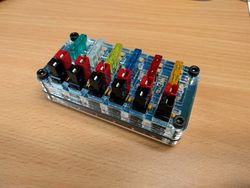
| |
| Status | Completed |
| Project Lead | User:TylerWard |
Powerpole Distribution Box Project
A DC power distribution board using Anderson powerpole connectors
Status
Completed, designs are available at Github
Feature List
- 6 powerpole connectors
- Individually fused connections with indicators
- 30A capacity (limited by current rating of the fuse holders)
Costings
Costings below are for individual orders the main club order will be cheaper
| Type | Item | Cost | Link |
|---|---|---|---|
| connector | 12*45A pcb contacts | £9.90 for 15 | [1] |
| connector | 6* red 45A housings | £2.65 for 10 | [2] |
| connector | 6* black 45A housings | £2.65 for 10 | [3] |
| Fuseholder | Keystone 3522 | £6.56 for 100 | [4] |
| Resistor | 330ohm though hole 0.25w | £0.23 for 10 | [5] |
| LED | 3mm red/yellow | £0.24 for each | [6] |
| PCB | 5*10cm 2oz blue | $40.95 for ~10 or (£3 each) | [7] |
Build Instructions
Components
- 1 x Powerpole Distribution PCB
- 4 x Acrylic layers with various cut-outs (3 x 6mm layers, 1 x 3mm layer)
- 4 x 25mm M4 steel bolts
- 4 x M4 steel nuts
- 6 x 45A Powerpole contact pairs
- 6 x Black plastic powerpole housings
- 6 x Red plastic powerpole housings
- 6 x Fuse holder contact pairs
- 6 x ATO fuses
- 6 x capacitors
- 6 x 330ohm resistors
- 6 x 3mm red/yellow LEDs
Tools Required
- Soldering iron - high power (45W+) with a large tip as there are a large thermal masses to solder.
- Sidecutters
- (Recommended) Helping hands or other PCB support tool.
Assembly
1. Solder resistors, capacitors and LEDs onto the PCB.
2. Push fuse holder contacts through the holes in the PCB.
3. Solder fuse holder contacts. These will suck up the heat, so may take a while to get up to temperature.
4. Assemble the to top two acrylic layers and attach the partly-populated PCB using the nuts and bolts provided. (The exploded view in the mechanical drawing shows how the layers stack up)
5. Assemble the powerpole contacts by joining them together and inserting the contacts into their housings.
6. Place the powerpole contacts onto the PCB. To ensure correct placement, the top acrylic layers should be fitted first, otherwise the spring of the powerpoles will cause these layers to be offset.
7. Solder the powerpole contacts onto the PCB. The most straightforward way found to do this is to push the PCB and powerpole contacts down onto a hard heatproof surface, so that they sit in the correct place whilst they are soldered. They should be soldered as quickly as possible to avoid the powerpole housings melting due to too much residual heat.
8. Check for any solder bridges across both the fuses and powerpoles.
9. Remove the nuts used whilst assembling the top two acrylic layers and PCB in step 4. Then assemble the remaining two acrylic layers and attach to the previously assemble layers, before reattaching the nuts. (The exploded view in the mechanical drawing shows how the layers stack up)
10. Insert the fuses and then your ready to use your Distro!

